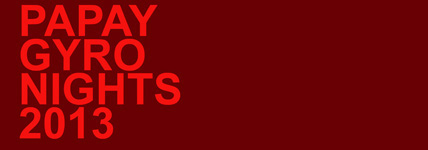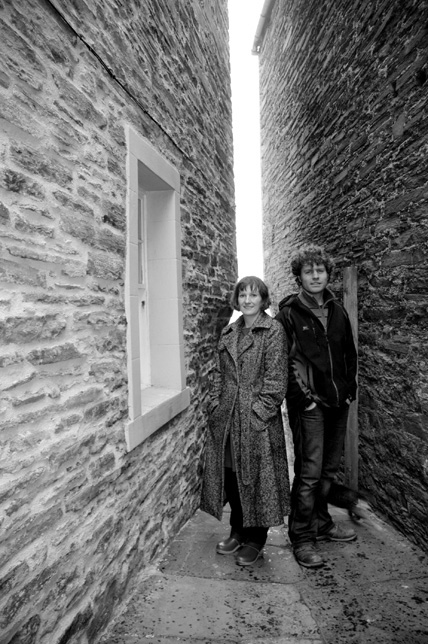 |
| Antonia Thomas & Dan Lee |
 |
Archaeology meets art at Papay Gyro Nights The boundaries between art and archaeology are becoming increasingly blurred. Ideas drawn from contemporary art practice and theory are becoming common in archaeological interpretations of the past, and many contemporary artists are influenced by archaeological processes and subjects in their work. The appearance of artists-in-residence on archaeological research projects is a particularly emergent trend, with such creative collaborations becoming almost de rigueur on large excavations. So why not invert that dynamic and have an archaeologist-in-residence in a contemporary arts context? In popular thinking, archaeology is connected with two things: the distant past, and excavation. But archaeology has expanded far beyond its antiquarian beginnings and its original focus. Archaeology investigates the complex entanglements of humans, places and things; the materiality of day-to-day living. This is as relevant to the contemporary period as the ancient past. As such archaeology offers a method of enquiry rather than a period of study and it is now commonplace for archaeologists to study the contemporary or recent past as well as prehistory. This contemporary archaeology shares with contemporary art the exploration of site-specificity, context, process and time. Accepting the practice of archaeology as a creative discipline, neither tied to excavation nor to the ancient past, allows the possibilities for research and collaboration to become infinite. As archaeologists-in-residence we will explore some of those possibilities. Papay’s ancient past is well-documented, from the oldest standing building in northern Europe at the Knap of Howar, to the medieval remains of St Boniface Kirk. But these places continued to be important long after they were first constructed and used, and in many ways they are 21st-century sites as much as Neolithic, or medieval ones. The kelp stores and grain lofts also tell stories, as do the boat nausts around the shore, vestiges of a time when working the land and harvesting the sea dominated daily lives. Papay Gyro Nights already has an archaeological sensibility. Narratives of past and present overlap as archaeology and folklore become entangled in the contemporary landscape of the island. The past is constantly being created, just as we ourselves are constantly in the process of becoming past. We simultaneously curate and mediate between assemblages of people and things, past and present. Art meets archaeology during the festival as the material traces of fire-burning rituals and performances leave their own record. The monument to the last great auk, the grave-markers of drowned sailors, the bomb craters at the north end, modern graffiti and beach bruck; these are often left out of traditional archaeological discussions, yet are archaeology nonetheless. As archaeologists-in-residence, we do not intend to carry out a traditional archaeological survey of the island, as that has been expertly done before. We want to complement previous work by exploring the contemporary archaeology and future folklore of the island. Over the next year we hope the residency will allow us the opportunity to learn about our own archaeological practice whilst also offering a new perspective on Papay Gyro Nights. Antonia Thomas & Daniel Lee, |
Antonia Thomas and Daniel Lee are archaeologists based in Orkney Antonia’s research explores archaeological art and visual culture, the Neolithic of Orkney and the relationship between archaeology and contemporary art. She is currently undertaking an AHRC-funded PhD on Orkney’s rock art and graffiti at Orkney College UHI. Daniel is an archaeologist with the Orkney Research Centre for Archaeology (ORCA) and specialises in landscape archaeology, excavation
|
| uhi.academia.edu/AntoniaThomas email: antoniathomas78@gmail.com uhi.academia.edu/DanielLee email: danhjlee@hotmail.co.uk |
| RESIDENCIES |
 |
| 2013 |
| INTRODUCTION |
| PROGRAMME |
| PARTICIPANTS |
| Ø - UNIVERSITY |
| CONTACT |
| BOX OFFICE |
| BLOG |